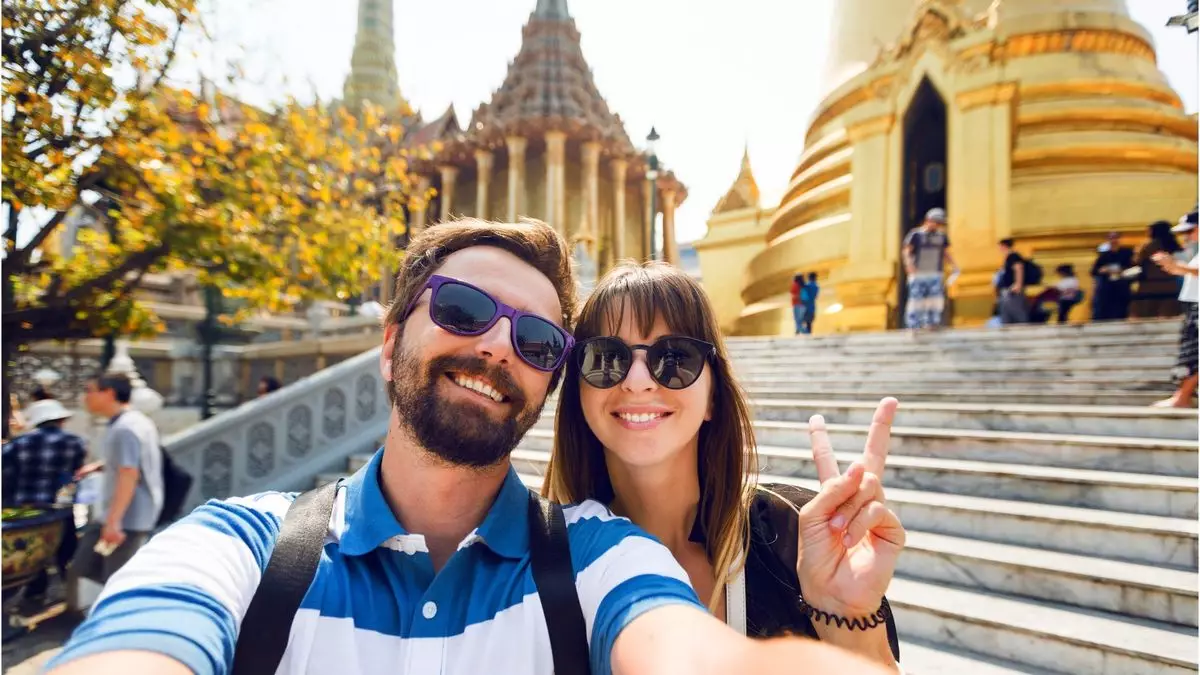As global travel begins to rebound in the wake of the COVID-19 pandemic, the Asian tourism landscape is witnessing a significant transformation. Destinations that were once vibrant and bustling with tourists are cautiously re-emerging from a prolonged hiatus, and this shift is generating new patterns and behaviors among travelers. In particular, iconic sites like Angkor Wat in Cambodia have become focal points for this discussion, illustrating both the challenges and opportunities that currently exist in the travel market.
Angkor Wat, a majestic 12th-century temple complex and a UNESCO World Heritage Site, has a storied history of attracting hordes of visitors, especially during breathtaking sunrises. However, travel recovery has been sluggish, especially from Asian markets which traditionally contributed a significant number of tourists to the region. The absence of substantial numbers of Chinese travelers—who have historically dominated tourism in Southeast Asia—has been a major factor affecting visitor numbers, leading to a current situation where ticket sales for Angkor Wat remain only at 45% of pre-pandemic levels, as noted by industry experts.
Several factors are contributing to the slow recovery of Asian travel markets. The resurgence of international travel has not been uniform; while regions like North America and Europe have seen travelers return in greater numbers, many Asian countries are still grappling with lingering effects of the pandemic. Currency fluctuations and economic instability have further exacerbated these challenges. For instance, the weak Japanese yen has discouraged Japanese tourists from venturing abroad, making international travel financially prohibitive.
China’s reopening has been gradual, with the country still about 75% back to typical outbound travel levels. While the Chinese market is starting to mobilize towards destinations like Japan, domestic travel remains more appealing due to economic concerns, and many potential travelers are opting for short-term, local experiences rather than international escapades.
Interestingly, traveler behavior is evolving in response to these economic realities. As reported by various travel agencies, tourism patterns are changing; post-pandemic, travelers seem more inclined to explore multiple destinations within their trips rather than focusing on a single location. This shift indicates not just a renewed interest in travel, but also a nuanced understanding of the importance of diverse experiences which could help mitigate the risks associated with economic fluctuations.
Tour operators have begun to see an uptick in interest for packages that combine several countries within Asia, reflecting a trend where travelers aim to maximize their limited time and resources. For example, multi-country tours that encompass Vietnam, Cambodia, and Thailand are increasingly popular, allowing tourists to experience the rich cultural tapestries and vibrant histories of each country in a cohesive manner.
Interestingly, while traditional sources of travelers may be slower to recover, suppliers catering to the English-speaking markets are reporting a surge in bookings, particularly for destinations like Japan and Southeast Asian nations. Companies are highlighting a 41% increase in travel to Asia in 2024 compared to the previous year, showcasing optimism among certain segments of travelers. In addition, companies specializing in luxury travel are noticing sustained interest, though they also identify a paradox where lower-cost aspects like transportation might be offset by rising prices in hospitality and luxury services.
Furthermore, cruise tourism is showing signs of significant recovery, especially along the Mekong River in Vietnam and Cambodia. Popular cruise lines are witnessing full-capacity voyages, indicating that the allure of unique experiences, such as navigating the Mekong, can overcome apprehensions about broader travel uncertainties.
The landscape of travel in Asia is undergoing a dynamic evolution shaped by emerging economic realities and changing traveler preferences. While the scars of the pandemic remain visible—especially in traditionally strong markets like China and Japan—there are signs of hope as new patterns in tourism emerge. As travelers prioritize more enriching, multifaceted experiences, destinations like Angkor Wat and others can anticipate a future where adaptability and resilience dictate their path to recovery. The journey forward may be complex, but it is undoubtedly rich with possibilities for exploration, connection, and cultural appreciation.

